Test: Jaguar I-Pace Electric Tour
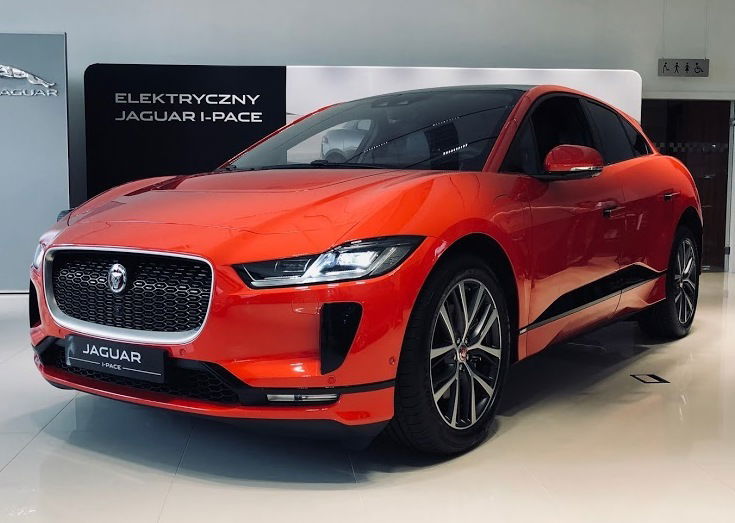
Jaguar I-Pace
On July 6th and 7th, 2018, at the invitation of the Poznań Jaguar Karlik dealership, I took part in the “Jaguar I-Pace Electric Tour.” The event, held in several major Polish cities, aimed to showcase the new model from the British brand and directly familiarize testers with the electric technology used by the manufacturer.
Presentation
Upon entering the dealership, visitors had the chance to get acquainted with one of the models. The car stands out due to its size – it’s large, yet compact. It’s comparable in length to the BMW X4, though it’s 6 cm lower. The body shape is objectively attractive, but unusual. The vehicle cannot be classified as an SUV, though the manufacturer claims that the car performs well off-road (which was not verified during the test drives as the planned route only included street driving). The body shape resembles that of a large crossover. It resembles one, as the styling clearly indicates that this is an electric vehicle.
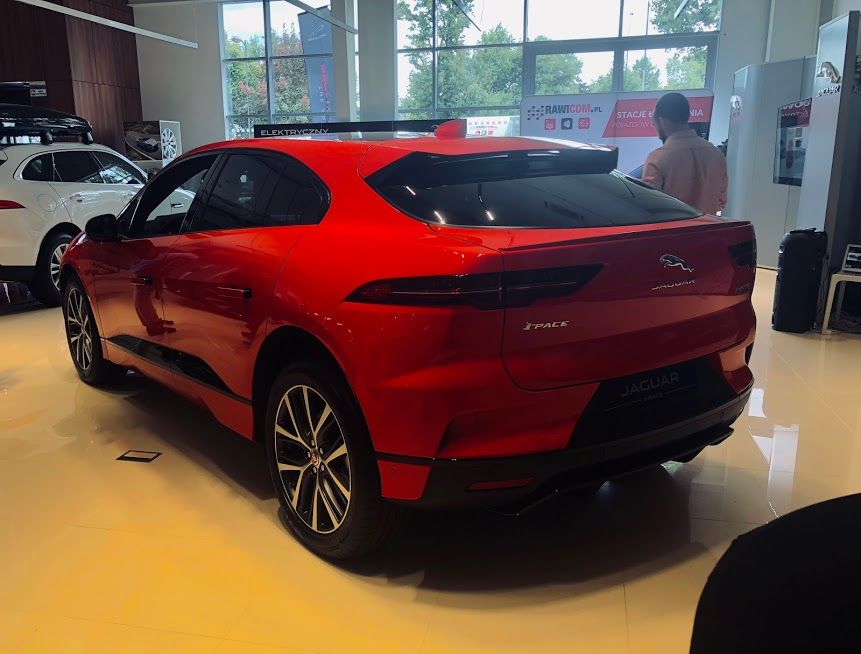
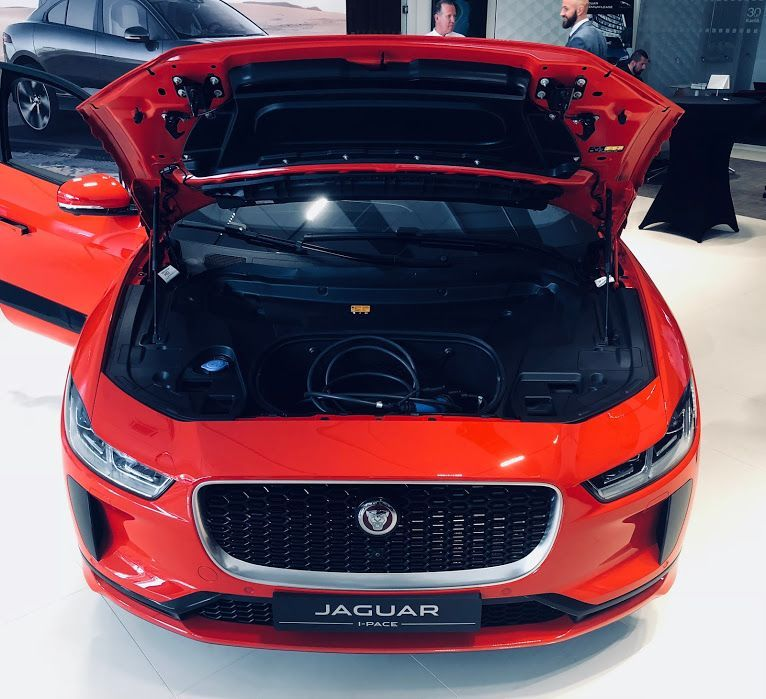
The very long wheelbase and the high door edges reveal that under the floor, the car hides batteries storing the energy needed for movement. Aside from that, the vehicle looks like a typical modern car. It’s clear that the manufacturer dedicated a lot of attention to refining the car’s aerodynamics. The door handles, which completely retract into the doors, and the sophisticated rear diffuser are evidence of work done in the aerodynamic tunnel.

Technical specification
Before the test drive, we were provided with a lot of information about the innovative drivetrain and its key features:
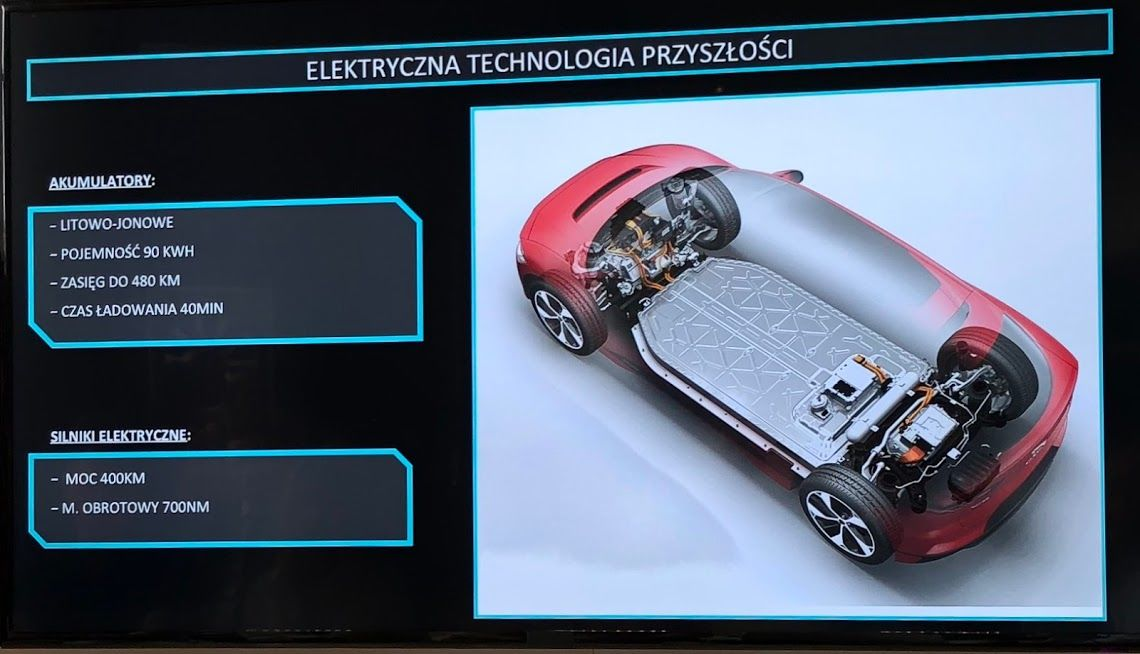
The I-PACE has a range of 480 km in the WLTP cycle. This is made possible by the use of lithium-ion batteries with a capacity of 90 kWh, which weigh 613 kg (the car's own weight is 2133 kg). The range of electric cars is increasing year by year, reflecting technological progress in this area. The greater the range, the more justified the purchase of an electric vehicle becomes. During the presentation, it was emphasized that the demand for electric vehicles continues to rise and that there will be a global boom, similar to what happened with mobile phones or the internet. The question remains, though, when this will happen in the Polish market, and if it does, when the electricity will be sourced from renewable energy rather than primarily from coal.
The power of the car and the battery capacity place this model as a direct competitor to Tesla. Of course, Jaguar representatives did not hesitate to make a direct comparison between the two vehicles:
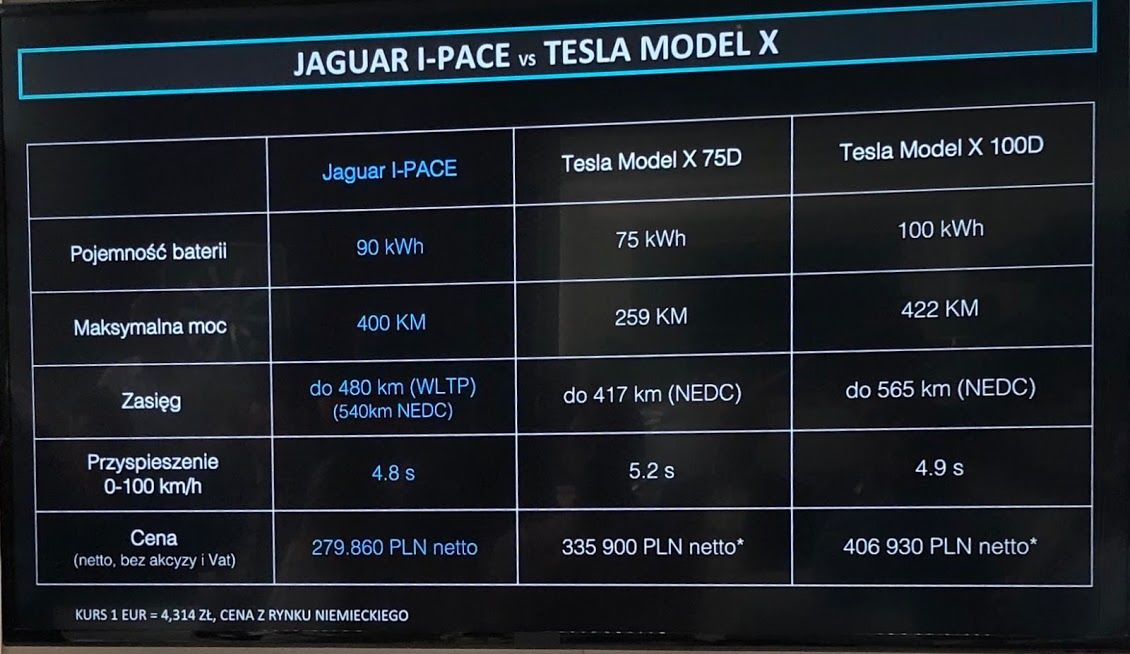
It looks like Tesla has a serious competitor in Europe, and in Poland, it has even been surpassed. A much better price for the car itself, the ability to purchase it within the country, and, most importantly, the existing network of service points are the main elements in Jaguar's favor.
A huge advantage of the I-Pace is the experience gained by the brand in Formula E racing – the electric equivalent of Formula 1. Races of this class take place in major cities worldwide (for example, in Berlin). History shows that manufacturers who actively participate in motorsport at a high level develop their technology much faster and refine it better than competitors who do not participate in such events. A big plus.
Handling
After discussing the key technological elements and the car itself, it was time to move on to the vehicles. Several pre-production units were available for test drives. After entering the car and settling into a comfortable position in the fully electric seat, it was finally time to hit the road.
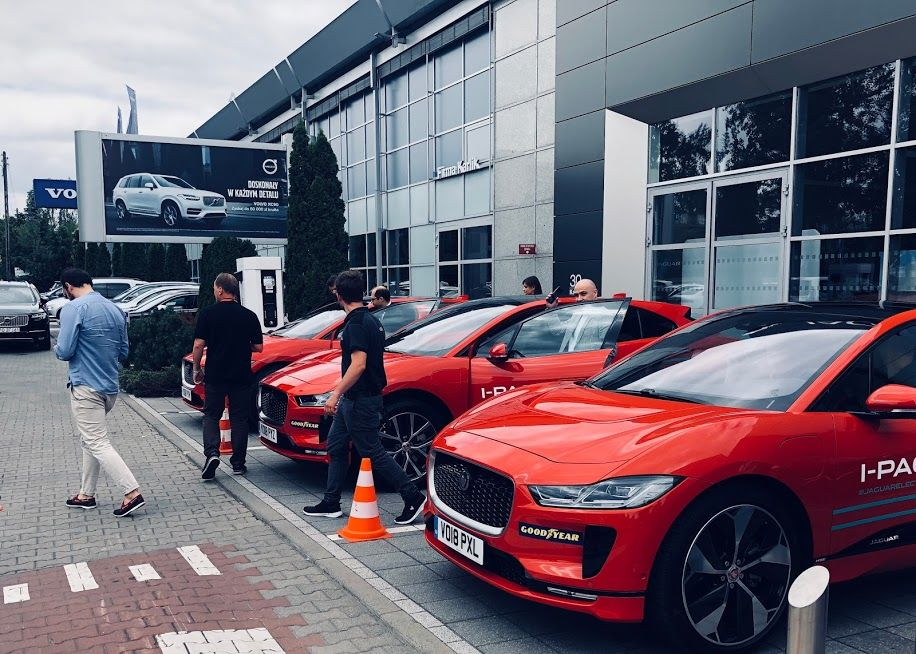
The route included both a national road and a section of expressway, allowing for a test of how the car performs at higher speeds. The driving experience, due to the car's weight, can be compared to driving a large SUV. The I-Pace is equipped with air suspension, which provides a very high level of comfort—at least as long as we're driving straight. The car's significant weight (2133 kg) is a typical trait of electric vehicles that cannot be hidden.
While testing acceleration (0-100 km/h in 4.8 seconds) or overtaking on the national road, the I-Pace impresses with its flexibility, speed buildup, and braking performance. The brakes, as expected from a European car, perform very well (especially for a vehicle weighing 2100 kg). This was quite different from my experience driving a Tesla Model S, which came from the American market, potentially explaining its weaker braking system. Nonetheless, the Jaguar stops decisively better.
Additionally, like most electric vehicles, the I-Pace features a regenerative braking system. This system ensures that instead of wasting energy as heat from the friction between the brake pads and discs, both electric motors provide resistance, benefiting both the range and the effectiveness of deceleration. With a bit of practice, the brake pedal can be pressed below 20 km/h to bring the car to a complete stop, meaning you can manage without using the brake pedal until that point.

The drawbacks of driving the I-Pace become apparent when dynamically tackling corners or driving on expressways or highways. As long as we stay within legal speed limits, the car turns quite confidently without excessive leaning. The problem arises when we approach the limit of tire grip, which, due to the vehicle's weight, becomes noticeable early. It starts with tire squeal, and then the car understeers, drifting toward the outside of the turn. Since this is an electric vehicle with all-wheel drive, the solution is to release the gas and wait until the tires return to their comfort zone, quiet down, and regain traction. The torque vectoring system certainly helps this heavy electric vehicle turn, and works to assist the driver, but unfortunately, it doesn’t eliminate the shortcomings of the chassis.
Another issue with the I-Pace is its behavior at highway speeds around 130-160 km/h. The Jaguar is highly susceptible to side winds or air currents coming from trucks (the body noticeably sways when overtaking large vehicles), and it behaves unpredictably when changing lanes. The car's directional stability also leaves much to be desired, resulting in continuous steering corrections during high-speed travel. Perhaps the Jaguar simply wasn’t designed for this kind of driving after all?
Summary
Electric vehicles, despite their rapid development, are still designs that require a significant amount of engineering effort, not only in terms of range or battery weight but primarily in terms of road behavior. If they are truly going to cause a global revolution, they need to be at least as good, if not better, than cars powered by internal combustion engines. As we know, these can easily be purchased, serviced practically anywhere, and enjoyed for their excellent engine performance, interior ergonomics, and road handling. For many car users, driving dynamics are the main factor in deciding which car to choose, not to mention the virtually unlimited range due to easy access to fuel.
In summary, credit is due to Jaguar for creating its first fully electric production car, which combines the luxury character of the brand. It is a highly competitive electric vehicle in the market and objectively an exemplary means of transportation. If the future is to embody the traits of the I-Pace, even with electric drive, it will offer the best aspects of current automotive technology.


